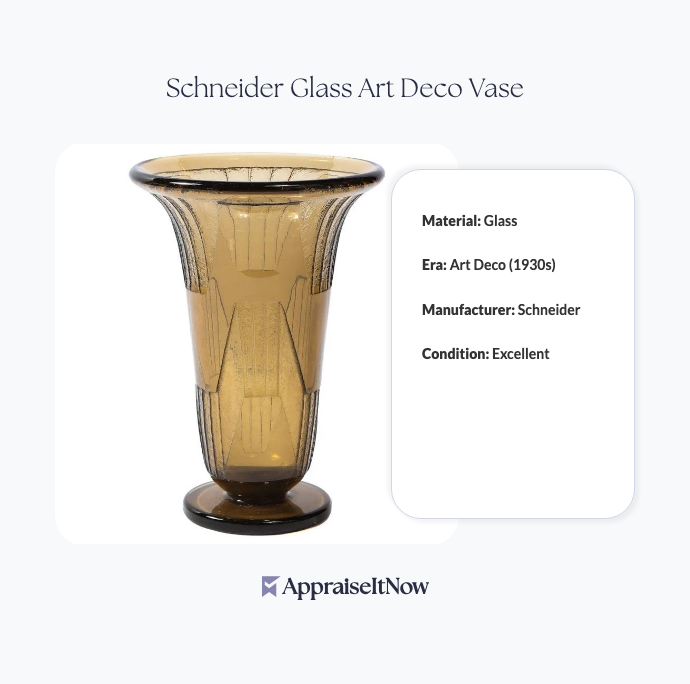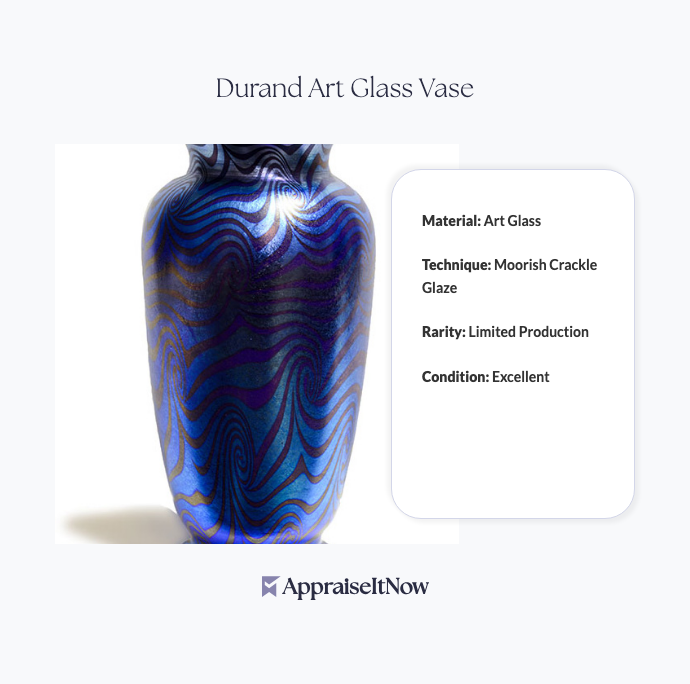<h1>How to Get Your Tiffany Studios Pond Lily Lamp Appraised</h1>
<p>A genuine Tiffany Studios lamp represents one of the most cherished collectibles in the antique lighting market. If you own a Tiffany Studios Pond Lily Lamp or are considering purchasing one, understanding the appraisal process is essential for making informed decisions about insurance, sale, or collection management. With estimated values ranging from <strong>$60,000 to $70,000</strong>, these iconic Art Nouveau lamps demand professional evaluation to verify authenticity and establish accurate market value.</p>
<h2>Understanding Your Tiffany Studios Pond Lily Lamp's Value</h2>
<p>The Tiffany Studios Pond Lily Lamp stands as a masterpiece of early 20th-century American craftsmanship. First introduced in the 1900s, this lamp combines intricate leaded glass with a meticulously detailed bronze base, featuring a serene design of water lilies and lily pads. The lamp's exceptional quality and meticulous construction are hallmarks of Tiffany's unparalleled artistry, making it highly sought-after among both serious collectors and lighting enthusiasts who appreciate the convergence of engineering and art.</p>
<p>The value of your Pond Lily Lamp depends on multiple factors beyond its basic design. When evaluating your lamp's worth, you're essentially determining its position within the broader <a href="/types/antique-artwork">antique artwork</a> and <a href="/types/memorabilia-and-collectibles">memorabilia and collectibles</a> markets, where authentication, condition, and historical significance drive pricing.</p>
<div class="callout tip"><p><strong>Collector's Insight</strong></p>
<p>Tiffany lamps with documented factory records, original signatures, and pristine condition can command prices at the higher end of market estimates or even exceed them significantly.</p></div>
<h2>What Makes a Tiffany Lamp Authentic?</h2>
<p>Before seeking appraisal, you need confidence that your lamp is genuinely a Tiffany Studios creation. Many reproductions and Tiffany-style imitations flood the market, creating confusion among collectors. Understanding the difference between authentic Tiffany lamps and modern interpretations is crucial for accurate valuation.</p>
<h3>Key Authentication Markers</h3>
<p>A genuine Tiffany Studios Pond Lily Lamp exhibits specific characteristics that separators authenticate pieces from later copies. The leaded glass shade should display the <strong>unique, hand-cut glass pieces</strong> characteristic of Tiffany's workmanship, where color variation and subtle imperfections indicate individual hand-crafting rather than mass production. Each piece of glass was selected for its tonal qualities, creating depth and luminosity impossible to replicate with modern uniform glass.</p>
<p>The bronze base reveals Tiffany's signature attention to detail through precise casting and finishing. Look for the <strong>Tiffany Studios New York mark</strong> on the base itself—this foundational marking typically appears near the foot or central support. The patina on authentic bronze bases develops naturally over more than a century, displaying wear patterns consistent with age rather than artificial antiquing methods.</p>
<p>Real Tiffany glass includes tiny <strong>air bubbles and irregularities</strong> from the glass-making process of that era. While this might seem like a flaw, these characteristics prove authenticity since modern reproduction glass is intentionally made flawless. The solder joints holding the glass pieces together should display characteristics consistent with early 20th-century soldering techniques.</p>
<h3>Spotting Reproductions</h3>
<p>The question "What's the difference between a Tiffany lamp and a Tiffany style lamp?" highlights a critical distinction in the market. Tiffany-style lamps reference the aesthetic of Tiffany's work without claiming Tiffany Studios manufacture. These reproductions, produced throughout the 20th century and continuing today, can range from obvious copies to sophisticated fakes that require expert examination.</p>
<p>Reproductions typically feature uniform glass pieces without the subtle color variations of hand-selected authentic glass. Modern manufacturing creates consistent solder joints lacking the patina patterns found on century-old examples. Reproduction bases often display maker's marks from their actual manufacturers—perhaps from China, Taiwan, or other modern production sources—rather than the Tiffany Studios mark.</p>
<p>Understanding these distinctions becomes essential when exploring resources on <a href="/blog/how-to-find-a-qualified-appraiser-for-antique-artwork">how to find a qualified appraiser for antique artwork</a>. A professional appraiser will have developed the trained eye necessary to spot reproduction techniques that might fool casual collectors.</p>
<h2>Factors That Influence Your Lamp's Appraisal Value</h2>
<p>Once authenticity is established, several specific factors determine where your Pond Lily Lamp falls within the <strong>$60,000 to $70,000</strong> valuation range—or potentially above it for exceptional examples.</p>
<h3>Condition and Restoration History</h3>
<p>The physical condition of your lamp dramatically affects its market value. An example with original glass pieces that have survived a century without breaks or replacements commands premium pricing. Any significant restoration—new glass pieces, repaired solder joints, or refinished bronze—reduces value, though professional restoration by qualified experts preserves more worth than amateur repairs or neglect.</p>
<p>Your appraiser will examine the glass for chips, cracks, or cloudiness that might indicate age-related deterioration or heavy use. The bronze base receives scrutiny for structural integrity, original patina, and any signs of casting defects or previous repairs. Original solder lines, even if they show age, typically enhance value compared to reworked joints.</p>
<p>The presence of a functional light mechanism—assuming it operates safely—maintains or enhances value. Non-functioning lamps can still command strong prices from collectors willing to address electrical systems with period-appropriate restoration, though functional examples typically achieve higher valuations.</p>
<div class="callout note"><p><strong>Appraisal Consideration</strong></p>
<p>Original finishes and surfaces, even with patina and age-appropriate wear, often command premiums over polished or refinished examples in the Tiffany market.</p></div>
<h3>Rarity and Design Variations</h3>
<p>The Pond Lily design exists in several variations produced during Tiffany Studios' operation. Some versions feature slightly different lily pad arrangements, color combinations, or base styles. Certain color palettes—particularly those incorporating rare glass tones Tiffany sourced throughout the world—command premium prices among collectors seeking specific aesthetic effects.</p>
<p>Size variations also influence value. While the standard Pond Lily Lamp reached approximately 27 inches in height, other sizes were produced in limited quantities. Smaller or significantly larger examples may achieve different valuations based on rarity and collector demand for those specific dimensions.</p>
<p>Limited production runs or lamps created during specific periods with documented historical significance might achieve valuations exceeding the standard range. Your appraiser will research whether your particular example represents a production variation with particular collector interest or desirability.</p>
<h3>Provenance and Documentation</h3>
<p>Documentation proving your lamp's history enhances its value significantly. If you have original purchase receipts, gallery records, previous owner information, or any historical documentation, these materials support higher valuations. Lamps with traceable provenance through significant collections or notable owners achieve premium pricing.</p>
<p>The presence of a Tiffany Studios catalog reference or illustrated documentation proving your specific lamp design existed within Tiffany's production adds substantial credibility and often supports higher valuations. When provenance includes exhibition history at museums or prestigious collections, collectors perceive significantly increased value and legitimacy.</p>
<h2>The Professional Appraisal Process for Tiffany Lamps</h2>
<p>Understanding what professional appraisers examine helps you prepare your lamp for evaluation and sets realistic expectations for the appraisal outcome.</p>
<h3>What Appraisers Examine</h3>
<p>A qualified appraiser specializing in <a href="/types/antique-furniture">antique furniture</a> and lighting will conduct a comprehensive physical examination of your Pond Lily Lamp. They'll assess glass shade condition piece-by-piece, examining solder joints, patina development, and any signs of previous repairs. The bronze base receives equal scrutiny, with inspection for casting quality, original finish characteristics, and structural soundness.</p>
<p>Documentation forms a crucial component of the appraisal. Your appraiser will photograph your lamp from multiple angles—including close-ups of the Tiffany Studios mark, base details, and any significant glass patterns or color variations. These high-resolution images become part of the permanent appraisal record, serving insurance purposes and future sales documentation.</p>
<p>Market research comprises the final appraisal element. Your appraiser will analyze recent comparable sales of similar Tiffany Pond Lily Lamps, examining auction results, private sales data, and dealer listings. This comparative analysis contextualizes your lamp's value relative to the <strong>$60,000 to $70,000</strong> range based on specific condition, provenance, and market trends.</p>
<h3>Preparing Your Lamp for Appraisal</h3>
<p>Before your appraisal appointment, gather any documentation you possess. Original purchase receipts, inheritance records, previous exhibition catalogs, or any materials proving ownership history strengthen the appraisal. Photograph your lamp under good lighting before the appointment, capturing the base signature, glass patterns, and any distinctive features.</p>
<p>Maintain your lamp's current condition without attempting cleaning or restoration. Professional appraisers prefer examining pieces in their current state rather than altered conditions. Light dusting is acceptable, but avoid polishing, washing, or any treatments that might affect the original patina or surface characteristics.</p>
<div class="callout tip"><p><strong>Preparation Step</strong></p>
<p>Document your lamp's location history and any notable collectors or institutions that previously owned it—this provenance information substantially supports appraisal value.</p></div>
<h2>Why Authentic Tiffany Values Continue Rising</h2>
<p>The Tiffany Studios lighting market demonstrates consistent appreciation, reflecting several underlying factors. Tiffany lamps represent a finite supply—no new authentic examples will ever be produced, creating natural scarcity that supports values. As wealthy collectors compete for limited inventory and museums selectively acquire examples, competition drives prices upward.</p>
<p>The broader antique lighting market experiences renewed interest from designers and decorators seeking authentic period pieces for high-end residential and commercial projects. This expanded collector base, combined with the decorative appeal of functioning Tiffany lamps in contemporary interiors, maintains strong demand across price ranges.</p>
<p>Cultural recognition of Tiffany Studios as a foundational American art movement enhances collecting interest. Museums regularly feature Tiffany glass and lighting in exhibitions, generating publicity and educational content that attracts new collectors to the category. This expanding market enthusiasm supports the <strong>$60,000 to $70,000</strong> valuations while demonstrating potential for continued appreciation.</p>
<h2>Insurance and Documentation After Appraisal</h2>
<p>A certified appraisal report becomes essential documentation once you understand your Tiffany Pond Lily Lamp's true value. Insurance companies require professional appraisals for pieces exceeding standard policy coverage limits, and most insurers request USPAP-compliant valuations from credentialed appraisers for high-value collectibles.</p>
<p>Your appraisal report should specify replacement cost value suitable for insurance purposes. This valuation reflects what you would need to spend to acquire an equivalent lamp in today's market, differing from auction estimates or dealer asking prices. Insurance adjusters rely on this replacement cost approach when processing claims for damaged or lost collectibles.</p>
<p>Maintain your appraisal report with your lamp's documentation in a safe location separate from the physical lamp itself. Digital copies stored securely online provide backup protection against loss. Updating your appraisal every three to five years ensures your insurance coverage remains current with market value changes and reflects any condition developments.</p>
<h2>Finding the Right Appraiser for Your Tiffany Lamp</h2>
<p>Selecting an appraiser with specific expertise in Tiffany Studios lighting and <a href="/blog/appraising-fine-glass-and-crystal-valuing-delicate-glassware-and-artistic-creations">fine glass and crystal</a> ensures accurate, credible valuation. Look for appraisers holding credentials from recognized professional organizations like the American Society of Appraisers (ASA), International Society of Appraisers (ISA), or Appraisers Association of America (AAA).</p>
<p>Verify that your appraiser has documented experience appraising Tiffany lamps specifically. Ask for references from previous clients or examples of appraisal reports they've completed. A qualified appraiser can explain their methodology, discuss comparable sales that support their valuation, and provide detailed documentation suitable for insurance, estate, or sale purposes.</p>
<p>Professional appraisal services like <strong>AppraiseItNow</strong> connect you with certified experts across the U.S. who specialize in high-value collectibles. Our network includes appraisers with deep knowledge of <a href="/types/antique-artwork">antique artwork</a> and decorative arts, ensuring your Tiffany lamp receives evaluation from someone genuinely qualified to assess its significance and value.</p>
<div class="callout note"><p><strong>Key Takeaway</strong></p>
<p>A professional appraisal of your Tiffany Studios Pond Lily Lamp provides the accurate valuation, detailed documentation, and expert authentication you need for insurance protection, informed sale decisions, or confident collection management. With values estimated between $60,000 and $70,000, this iconic Art Nouveau masterpiece deserves evaluation from credentialed experts who understand the market, recognize authentic Tiffany craftsmanship, and deliver the professional documentation that protects your investment.</p></div>







.avif)







